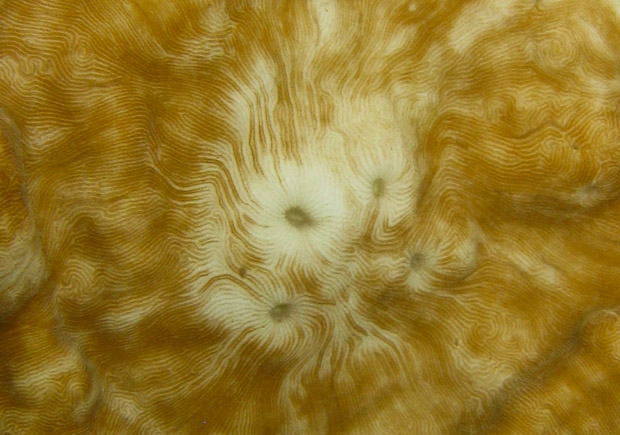Craterastrea levis is not exactly a new coral, it was described in 1983 and it is known to exist in Egypt, Chagos and the Red Sea. Due to some superficial resemblance, Craterastrea was later synonymized with Leptoseris hawaiiensis and remained so until recently when coral taxonomists took another, closer look and decided to shake up the stony coral family tree.
Not only did researchers Benzoni et. al resurrect Craterastrea as a valid species but they erected a whole new family of stony corals. Using Morphology and genetics, Benzoni and her colleagues took a closer look at the supposed Indian Ocean variants of “Leptoseris hawaiiensis” and determined that not only was this coral is not only distinct, but completely different and worthy of being placed in a new coral family called Coscinaraeidae.
The new Coscinaraeidae grouping includes a lot of little known and semi-cryptic stony coral species with which aquarists are genrally not too familiar. IN addition to the resurrected Craterastrea levis, Coscinaraeidae also includes other Indian Ocean endemics such as Horastrea, Anomastrea as well as the more broadly distributed Coscinarea.
Although it may seem like all of this information is on the fringes of where the real aquarists are paying their attention, it wasn’t long ago that very few reefers kept Leptoseris, or the various chalice corals, and there’s still lots of room for aquarists to discover new and beautiful strains of Coscinarea in our aquaria. Understanding that Coscinarea is now classified among a unique group of corals that may have needs very different from what we might initially believe.
Since so many new species of reef fish are described on a weekly basis it’s easy to sometimes think that stony coral taxonomy is idling. But as we’ve seen with the recently described Acropora sirikitiae, Leptoseris troglodyta, Dactylotrochus cervicornis and Porites fontanesii – we still have a lot of new coral species to discover.




